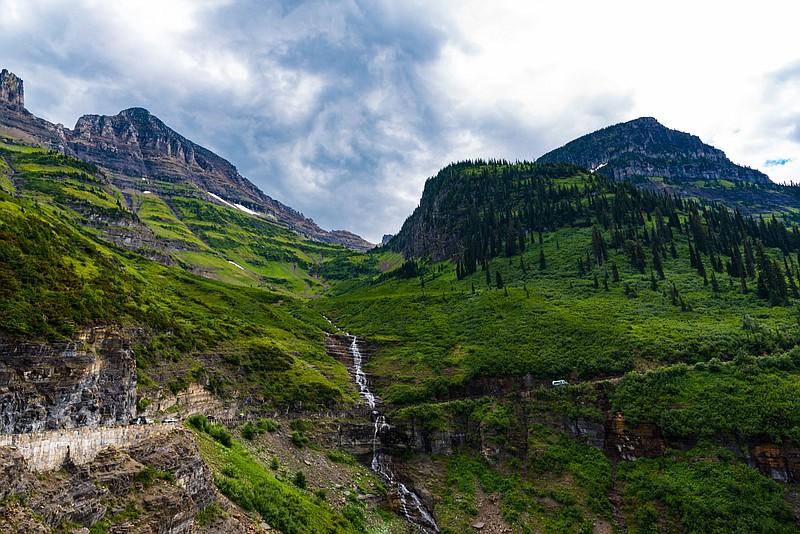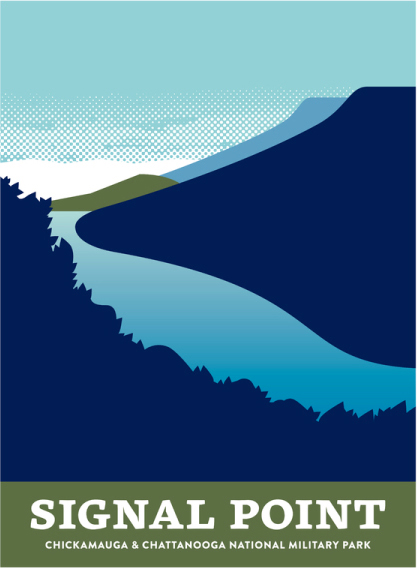Matters of State
National parks and state parks are essentially the same thing: scenic or historic lands protected for the benefit of the general public or the preservation of wildlife. The difference is that national parks are owned and protected by the federal government whereas state parks are owned and protected on a state level.Like the NPS, Alabama State Parks saw big headlines in 2016. For example, overall park attendance topped 5 million visitors for the first time since 2009.Fiscally speaking, however, the past few years have been lean for Alabama State Parks. Since 2012, following state budget cuts, $15 million in funding has been directed away from Alabama State Parks to other state government agencies, forcing the closure of five facilities in 2015: Blandon Springs, Chickasaw, Paul M. Grist, Roland Cooper and Florala.But Alabama State Parks ended 2016 on a high note with the passage of Amendment Two. The new legislation, which more than 78 percent of Alabama voters endorsed at the polls in November, will protect state park revenue from being used for other purposes.
By the numbers
Great Smoky Mountains National Park is America’s most visited National Park. Here is a by-the-numbers breakdown.10 million: Number of park visitors in 2015522,427: Number of acres in GSMNP2: Number of states that acreage is divided between (Tennessee and North Carolina)1926: Year of park’s establishment850: Miles of backcountry trails6,643: Highest elevation in feet within the park (Clingmans Dome)$18.5 million: GSMNP base budget in 2014734 million: Dollars generated by the park in 201310,734: Number of jobs supported by GSMNP in gateway communities0: Cost of park entrance fee5.5 million: Number of visitors the second-most visited National Park, the Grand Canyon, saw in 2015
Visit for free
Mark your calendar for these national park entrance-fee-free dates in 2017:» Jan. 16: Martin Luther King Jr. Day» Feb. 20: Presidents Day» April 15-16 and 22-23: Weekends of National Park Week» Aug. 25: National Park Service Birthday» Sept. 30: National Public Lands Day» Nov. 11-12:Veterans Day Weekend
Last year, the National Park Service celebrated its centennial with much ceremony. Between nationwide parades, concerts and free weekends, park turnout for 2016 is expected to smash records - and that is being met with mixed feelings.
On one side, it suggests a renewed enthusiasm for the outdoors. On the other, it causes concern for how parks balance public access with preservation. One thing is certain: Last year, the NPS saw no shortage of controversial headlines.
"National Park Service Faces Sex Harassment Scandal," read one National Geographic headline, regarding the most salacious NPS newstory in 2016. The scandal consisted of widespread allegations of misconduct and decades of cover-up within the NPS, resulting in congressional hearings and the resignations of several senior park managers. The story cast a shadow across the NPS centennial - though it clearly didn't damper park attendance.
As the NPS moves into its second century, here is a look back at other top NPS headlines of 2016.
"Are We Loving Our National Parks to Death?"
- The New York Times
The good news is that record-breaking park attendance means more funding for national parks. Those dollars help support upkeep, educational programs and more - including nearby communities.
In 2015, 307 million people visited national parks. A recent NPS report estimated that those visits contributed $32 billion to the U.S. economy. The Great Smoky Mountains National Park alone brought $874 million to nearby communities such as Pigeon Forge, Tennessee, and helped support 13,709 regional jobs.
Nationally speaking, park attendance helped support 295,000 jobs across the country.
"More Minorities are Hiking and Camping - Good News for Makers of Outdoorsy Gear"
- LA Times
National park numbers have been steadily increasing for years. That is due, in part, to successful marketing campaigns targeting minorities and millennials, demographics which have been underrepresented in outdoor activities, but whose engagement is critical to the future of public lands due to the shifting demographics of the next generation.
A 2016 survey commissioned by Kampgrounds of America (KOA) found that out of 3,000 Americans and Canadians who went camping for the first time in 2015, 18 percent were African-American and 11 percent were Hispanic, nearly double the rate for those groups in 2014. It also found that 44 percent of new campers were millennials, among which 54 percent were nonwhite.
"National Parks: Instagram Nirvana or Digital Detox"
- E & E Publishing
Technology has helped make the outdoors more accessible. Smartphones and online apps make it easier to find trails, reserve campsites and share that experience through social media.
However, some are asking, "At what cost?"
In Grand Teton National Park, the answer is $34 million: the cost to lay a high-speed fiber-optic cable from the scenic Teton Park Road to the southern border of Yellowstone National Park. If built, it would allow for internet connection at some of the park's most primitive campgrounds.
In 2011, the Outdoor Foundation surveyed 5,876 outdoor-recreators regarding their use of mobile technology. Roughly one-third said smartphones make their outdoor experiences more enjoyable. Another one-third said just the opposite.
It is young people and minorities, those underrepresented demographics when it comes to the outdoors, who use the most mobile technology during outdoor activities - nearly 50 percent of respondents ages 15-29, 44 percent of Hispanic and African-American respondents and 50 percent of Asian respondents.
There is no NPS-wide policy regarding cell service, so decisions regarding new towers and cables are made on a case-by-case basis. However, NPS Director Jonathan Jarvis says he supports more connectivity as long as it is used to increase education (i.e. downloadable field guides, star charts, etc.) and public safety.
"Woman Gored by Bison While Taking Selfie"
- The Telegraph
Having instant access to social media may provide a false sense of security in park backcountry, and that perceived safety may prevent visitors from exercising extreme caution.
In the summer of 2015, five people were gored by bison at Yellowstone National Park after ignoring warnings to keep a safe distance. One woman was gored while trying to take a selfie with the animal. According to a Yellowstone spokesperson, that number of bison attacks is more than double what it was in previous years.
"Man Confirmed Dead After Fall in Yellowstone Hot Spring"
- NBC News
Last June, a man was killed at Yellowstone after leaving the designated boardwalk and falling into a geyser.
A week later, another tourist was fined $1,000 for leaving the boardwalk. That same season, two tourists were ticketed after putting a baby bison into the back of their vehicle and driving it to the ranger station. They said it looked cold. Ultimately that animal was euthanized after it was rejected by its mother due to human interference.
"America Values National Parks but Funding is Lacking"
- U.S. News & World Report
Blunders aside, numbers suggest the public still considers national parks "America's Best Idea," an expression first coined by writer and historian Wallace Stegner in 1983. Last year, in an independent survey conducted by professors from Colorado State University and Harvard University, 700 American households were asked how much they would pay to protect NPS land. Researchers then used those figures to estimate NPS' economic value.
The results found that Americans put a value of $92 billion per year on national parks, and 81 percent said they would be willing to pay higher taxes to guarantee the preservation of these public lands.
Actual NPS funding totals around $3 billion a year, which comes from visitor fees and the federal government. This amount covers only a quarter of the cost of backlogged park projects. According to the NPS 2015 fiscal report, there is $11.93 billion worth of necessary infrastructure projects, including maintenance to NPS trails, campgrounds, roads, bridges, visitor centers and more.
In 1916, the National Park Service was created and tasked with protecting the existing 35 national parks and monuments. Today, the NPS protects 412 places, covering more than 84 million acres, including parks, monuments, beaches and recreation areas. In most ways, the NPS has had a prosperous first century. What is to be for the next 100 years cannot be foreseen. After all, the essence of nature - of human nature, too - is comprised of all things good, bad and beautiful.
Hang It Up
The Friends of Chickamauga and Chattanooga National Military Park and the Friends of Moccasin Bend partnered with local designer Aggie Toppins to produce a series of images centered around the park, which encompasses different areas - Chickamauga Battlefield, Lookout Mountain, Missionary Ridge, Moccasin Bend, Orchard Knob and Signal Point - and draws over 1 million visitors each year.
"My goal was to capture scenes in the life of these park units," says Toppins. "Rather than presenting familiar depictions, we wanted to give our community a glimpse at what it might be like to visit these special places. Moccasin Bend is known for deer sightings, for example, and the sunset at Orchard Knob is not to be missed."
To purchase one (or all) of the posters, visit friendsofchch.org/shop-tickets.

